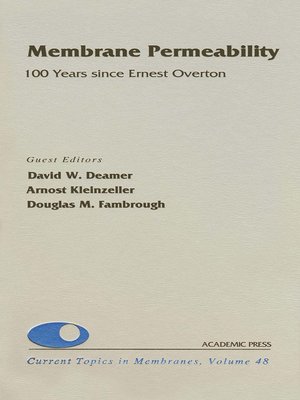Membrane Permeability
ebook ∣ 100 Years Since Ernest Overton · Current Topics in Membranes
By Dale J. Benos

Sign up to save your library
With an OverDrive account, you can save your favorite libraries for at-a-glance information about availability. Find out more about OverDrive accounts.
Find this title in Libby, the library reading app by OverDrive.



Search for a digital library with this title
Title found at these libraries:
| Library Name | Distance |
|---|---|
| Loading... |
Membrane permeability is fundamental to all cell biology and subcellular biology. The cell exists as a closed unit. Import and export depend upon a number of sophisticated mechanisms, such as active transport, endocytosis, exocytosis, and passive diffusion. These systems are critical for the normal housekeeping physiological functions. However, access to the cell is also taken advantage of by toxic microbes (such as cholera or ptomaine) and when designing drugs.
Ernest Overton, one of the pioneers in lipid membrane research, put forward the first comprehensive theory of lipid membrane structure. His most quoted paper on the osmotic properties of cells laid the foundation for the modern concepts of membrane function, most notably important in anesthesia.
This book is designed to celebrate the centennial anniversary (in the first chapter) of Overton's work. Subsequent chapters present readers with up-to-date concepts of membrane structure and function and the challenge they pose for new explorations. - Provides an historical perspective of Overton's contributions to the theory of narcosis
- Presents an overview of each permeability mechanism, including active transport, endocytosis, exocytosis, and passive diffusion







